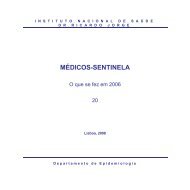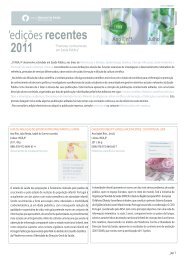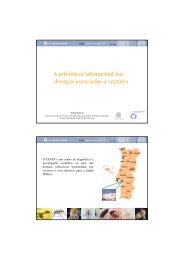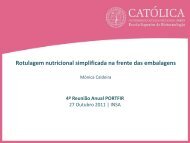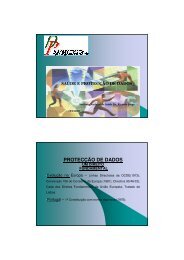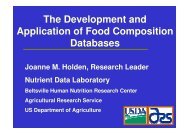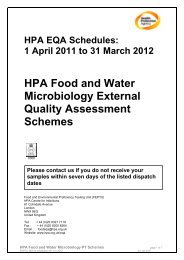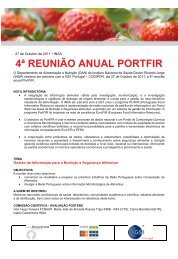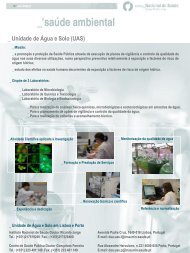European Society of Mycobacteriology - Instituto Nacional de Saúde ...
European Society of Mycobacteriology - Instituto Nacional de Saúde ...
European Society of Mycobacteriology - Instituto Nacional de Saúde ...
Create successful ePaper yourself
Turn your PDF publications into a flip-book with our unique Google optimized e-Paper software.
OP-11<br />
Mycobacterium avium SUBSPECIES STRAINS<br />
FROM HUMAN AND ANIMAL ORIGIN<br />
Radomski, Nicolas 1 , Thibault, Virginie 2 , Karoui, Claudine 1 , De Cruz, Krystel 1 , Cochard, Thierry 1 , Gutiérrez, Cristina 3 ,<br />
Supply, Philip 3 , Biet, Frank 2 , Boschiroli, María Laura 1<br />
1 - AFSSA-LERPAZ, Maisons Alfort<br />
2 - INRA-UR1282, Nouzilly<br />
3 - INSERM U629-Institut Pasteur, Lille<br />
The Mycobacterium avium sbsp. avium and Mycobacterium avium sbsp. hominissuis are pathogenic emergent bacterial species<br />
belonging to the Mycobacterium avium complex (MAC). These two subspecies can infect and lead to disease to numerous<br />
animal species: birds, pigs, cattle, <strong>de</strong>er, sheep, goats, horses, cats, dogs, etc. Moreover, Mycobacterium avium subspecies<br />
have been isolated in HIV infected patients and in immuno-competent patients with pulmonary pathologies. MAC is<br />
an ubiquitous bacterial group that can be found in water, in the environment, or even in food. A molecular typing study<br />
was un<strong>de</strong>rtaken with the primary goal <strong>of</strong> improving the taxonomic and epi<strong>de</strong>miological knowledge <strong>of</strong> MAC. Different<br />
strains <strong>of</strong> Mycobacterium avium sbsp. avium, Mycobacterium avium sbsp. hominissuis, and also <strong>of</strong> Mycobacterium avium sbsp.<br />
silvaticum, isolated from animals, humans, and the environment, were typed by two methods: the Restriction Fragments<br />
Length Polymorphism on insertion sequences IS1311 (RFLP1311), which is a standard method to characterise MAC, and<br />
the Variable Number <strong>of</strong> Tan<strong>de</strong>m Repeats-Mycobacterial Interspersed Repetitive Units (VNTR-MIRUs) characterisation,<br />
which has been recently <strong>de</strong>veloped on Mycobacterium avium sbsp. paratuberculosis. Our results <strong>de</strong>monstrate that the<br />
discrimination power <strong>of</strong> both methods is comparable (DI <strong>of</strong> more than 0.92). Therefore, VNTR-MIRUs seems a much<br />
better typing method since it is a PCR based method that requires little genetic material for being performed, which is<br />
easy to standardize in any laboratory and because the <strong>de</strong>duced numerical patterns do not require special s<strong>of</strong>twares for<br />
being compared in an inter-laboratories fashion.<br />
<strong>European</strong> <strong>Society</strong> <strong>of</strong> <strong>Mycobacteriology</strong> | 30 th Annual Congress | July 2009 | Porto - Portugal<br />
53



